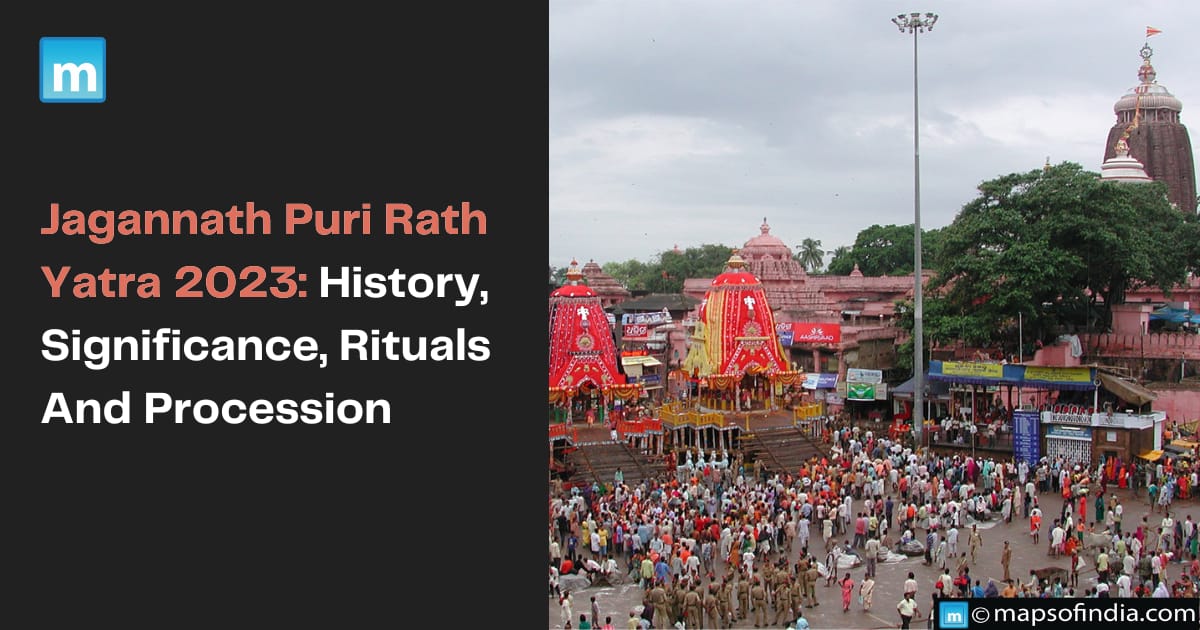The Chariot Festival, the Jagannath Puri Rath Yatra, is one of India’s most important and well-known Hindu celebrations. This massive procession, which has ancient origins, draws millions of followers from all over the world. The Jagannath Puri Rath Yatra in 2023 is expected to be a historical event that continues a centuries-old tradition. This essay explores the background and significance of this energetic celebration, giving readers a sense of the zeal and cultural legacy it reflects.
History
The Jagannath Puri Rath Yatra has a history of more than 2,000 years. The first Rath Yatra is thought to have taken place in the third century BCE, during the reign of Emperor Ashoka. However, the event rose to prominence and became more well-known throughout the 12th century thanks to the support of the Eastern Ganga dynasty King Anantavarman Chodaganga Deva.
Legend has it that Lord Jagannath, together with his siblings Lord Balabhadra and Devi Subhadra, wished to travel to the Gundicha Temple, which is about three kilometres from the main Jagannath Temple, to see where they were born. This yearly pilgrimage, which represents the goddesses’ love and connection with their followers, was greatly anticipated by worshippers.
Significance
An exceptional occasion that combines history, spirituality, and cultural heritage is the Jagannath Puri Rath Yatra. Millions of followers eagerly anticipate the opportunity to participate in this big event, which is a testament to their unwavering faith and dedication.
- Devotion and Spirituality: The Rath Yatra manifests profound devotion and spirituality. Devotees are said to receive enormous blessings and become closer to the almighty by participating in the parade and pulling the chariots. The celebration represents the spiritual quest for self-realization and reunification with the Supreme.
- Unity and Equality: The Rath Yatra is a socially inclusive festival that promotes equality and unity. Millions gather to view and participate in this spectacular march, regardless of caste, creed, or gender. It emphasises that everyone is equal in the sight of the divine and encourages harmony and equality among all followers.
- Devotional Service: The Rath Yatra is a prime example of devotional service. Devotees see it as an honour and a privilege to assist in drawing the chariots. Even a single touch or glance of the chariot is said to provide rewards and spiritual elevation.
- Cultural legacy: The festival highlights India’s and Odisha’s rich cultural legacy. The elaborate chariot carvings, the lavish costumes worn by the gods, the traditional music, and the colourful processions all help to preserve and promote the region’s cultural heritage.
The Rituals and Procession
The Rath Yatra lasts several days, and several rites and ceremonies are connected to each stage. The ‘Snana Yatra,’ in which the gods are ceremonially bathed, kicks off the festival. The “Anasara,” or subsequent isolation phase, comes after this. Finally, the three principal chariots of Lord Jagannath, Lord Balabhadra, and Devi Subhadra are drawn through the streets of Puri to the Gundicha Temple on the day of the Rath Yatra.
